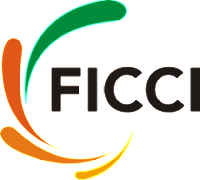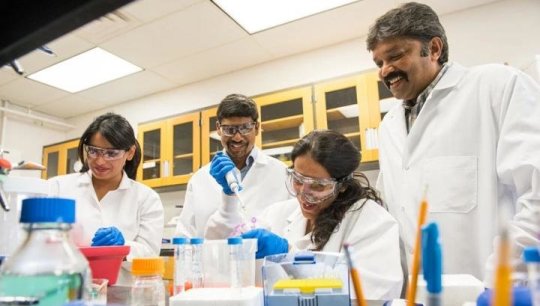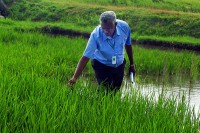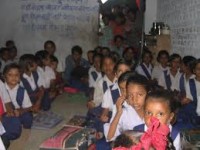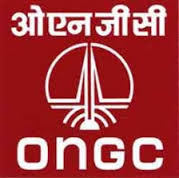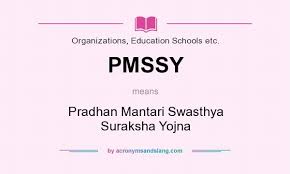Pests destroying almost one-fourth of crops !
Pharmacy researchers improving drug delivery
Summary:A number of drugs — from insulin to cancer chemotherapy — can be delivered only via injections, which are far more difficult for patients than taking a simple tablet or pill. It can also be more expensive, as this type of drug has to be prepared very carefully and sometimes can only be administered in a clinical setting. Now a pharmaceutical sciences team is working on a means around this problem.
A number of drugs–from insulin to cancer chemotherapy–can be delivered only via injections, which are far more difficult for patients than taking a simple tablet or pill. It can also be more expensive, as this type of drug has to be prepared very carefully and sometimes can only be administered in a clinical setting.
Ravikumar Majeti, PhD, a professor of pharmaceutical sciences at the Texas A&M Irma Lerma Rangel College of Pharmacy, and his team are working on a means around this problem. They think nano systems (tiny particles that can interact with cells) are the answer to delivering these types of difficult-to-administer drugs orally, and they think they’ve found a way, which they’ve reported in an article published in the journal Scientific Reports.
In many ways, the team has taken pieces of existing knowledge to formulate a new drug carrier. The research team’s overall approach, targeted nanosystem drug delivery, is a popular method in modern pharmacology, because tiny materials can get the drug where it is needed far better than traditional methods can.
The trouble is, the current methods of targeted drug delivery use ligands that have to out-compete the ligands that are naturally present in the body. On the other hand, Kumar’s team’s nanoparticles bind non-competitively, meaning the cells will still take up the particle even if they’re saturated with naturally occurring ligands. In order to achieve the non-competitive active transport, the Kumar team used gambogic acid, a natural product that is known for its ability to kill cancer cells.
“Our strategy is non-competitive active transport,” Kumar said. “These nanosystems have the ability to cross the intestinal barrier to reach other parts of the body and stay in circulation for a long time.” This ability to cross the intestinal barrier in sufficient quantities has been a major problem with oral medications–and part of why insulin, for example, is injected, not swallowed. In this case, the nanoparticle makes the body itself help the drug become absorbed.
“The way we put these things together is completely novel,” Kumar said. “This approach enables the development of carrier systems that have no equivalent in the world of competitive ligands.”
The system can also penetrate the blood-brain barrier, which could have important implications for drugs that need to reach the brain–to attack brain tumors, for example.
“We can fine-tune the nanosystems to match the disease in question,” said Ganugula Raghu, PhD, one of the researchers in Kumar’s lab and a co-author of the paper. “It is also relatively easy to adjust the timing of the drug release, either fast or slow, depending on the needs of the patient. For example, such systems can be designed to benefit diabetic patients by facilitating hepatic (liver) and peripheral insulin in a single dose.”
Exact concentrations of the active pharmaceutical and the ligand density on the particle can also be ‘tuned’ by controlling the ratios of functional to non-functional polymers. This can be thought of as similar to adding both real sugar (the ‘functional polymer’) and artificial sweetener (the ‘non-functional polymer’) to your iced tea. If you are trying to get exactly a certain number of calories, you can add more or less real sugar to get to that goal. To make the beverage the same consistency and sweetness, you would then add artificial, calorie-free sweeteners to make up the difference. The same basic theory applies to obtaining just the right amount of active medication.
“We really think these small particles will open up new avenues in receptor-mediated oral delivery of poorly soluble and permeable compounds that constitute about 40 percent of the new chemical entities requiring specialized delivery systems,” said Meenakshi Arora, PhD, another member of Kumar’s lab and paper co-author.
“I’m excited that this work is very translatable to the clinic,” added Prabhjot Saini, PhD, another lab member and co-author of the study. “Our work is very applicable to actual patients in need of live-saving medication–and they’re the reason we do what we do.”
Mango Production likely to increase by 6% in 2015-16 over Year 2014-15
According to the information received from the states so far, there is likely to be an increase of 6% in mango production in the year, 2015-16 as compared to the previous year, 2014-15.
As per the second advance estimation of the mango production will be table given below.
Several steps taken by the Government to increase the Country’s production of fruits and vegetables including mango are as under:
Mission for Integrated Development of Horticulture (MIDH), a Centrally Sponsored Scheme is being implemented during XII Plan w.e.f. 2014-15, for holistic growth of the horticulture sector covering all the horticulture crops including fruits and vegetables.
The Mission envisages production and productivity improvement of horticulture crops including fruit and vegetable crops through increased coverage of area with improved cultivars, rejuvenation of senile orchards, protected cultivation, creation of water resources, adoption of Integrated Pest Management (IPM), Integrated Nutrient Management (INM), organic farming, including insitu generation of organic inputs. Capacity buildings of farmers and technicians are also provided for adopting improved technologies.
| Table-1: Statewise Production of Mango | ||||
| P: Production in ‘000 Tonnes | ||||
| STATES/UTs | 2012-13 | 2013-14 | 2014-15 | 2015-16 (2nd Adv. Est) |
| ANDAMAN NICOBAR | 2.80 | 3.85 | 2.93 | 2.50 |
| ANDHRA PRADESH | 4406.92 | 2737.01 | 2822.08 | 3049.93 |
| ASSAM | 55.27 | 44.59 | 45.69 | 57.86 |
| BIHAR | 1363.80 | 1367.57 | 1272.00 | 1464.90 |
| CHHATISGARH | 291.83 | 327.91 | 386.67 | 321.75 |
| DAMAN & DIU | 0.00 | 0.00 | 2.05 | 0.00 |
| DELHI | 0.00 | 0.00 | 0.15 | 0.00 |
| GOA | 9.04 | 8.94 | 8.89 | 2.72 |
| GUJARAT | 1003.71 | 1125.61 | 1219.71 | 1301.00 |
| HARYANA | 79.55 | 86.61 | 88.72 | 118.20 |
| HIMACHAL PRADESH | 50.00 | 25.41 | 47.61 | 38.34 |
| JAMMU & KASHMIR | 23.09 | 6.99 | 20.93 | 29.41 |
| JHARKHAND | 517.92 | 517.92 | 523.14 | 414.39 |
| KARNATAKA | 1795.10 | 1755.56 | 1646.51 | 1652.50 |
| KERALA | 441.03 | 441.03 | 252.86 | 386.38 |
| MADHYA PRADESH | 376.00 | 379.73 | 396.00 | 436.01 |
| MAHARASHTRA | 633.00 | 1212.50 | 758.84 | 522.87 |
| MIZORAM | 3.47 | 3.68 | 4.18 | 4.18 |
| NAGALAND | 3.00 | 3.57 | 3.57 | 4.05 |
| ODISHA | 753.79 | 751.02 | 769.93 | 723.13 |
| PUDUCHERRY | 3.41 | 2.57 | 3.57 | 3.24 |
| PUNJAB | 105.92 | 107.57 | 113.44 | 119.40 |
| RAJASTHAN | 70.17 | 79.90 | 78.68 | 72.53 |
| TAMIL NADU | 714.08 | 785.50 | 896.78 | 1660.00 |
| TELANGANA | 1717.88 | 1801.75 | 1797.80 | |
| TRIPURA | 28.85 | 56.28 | 62.56 | 56.06 |
| UTTAR PRADESH | 4386.99 | 4300.98 | 4347.50 | 4611.20 |
| UTTARAKHAND | 148.64 | 150.44 | 150.62 | 150.67 |
| WEST BENGAL | 735.00 | 430.71 | 799.65 | 693.39 |
| TOTAL | 18002.38 | 18431.33 | 18526.98 | 19694.41 |
Development Of Eco-Friendly Flood Tolerant Seeds
Minister of State for Agriculture, Shri Sudarshan Bhagat has informed that the National Agricultural Research System comprising ICAR, central agricultural universities and SAUs are taking adequate steps continuously for developing eco-friendly flood tolerant seeds for protecting the crops in flood prone regions of the various States of the country. The concerted research efforts led to release of 49 different crop varieties tolerant to flood/water logging stresses comprising 22 of rice, 4 of maize, 10 of sugarcane, 10 of jute and 3 of soybean.
During 2013-14, 2014-15, 2015-16 and kharif 2016, 30.2 lakh ton, 30.4 lakh ton, 31.6 lakh ton and 12.0 lakh ton, respectively, of certified/quality seeds of improved varieties of different crops tolerant to flood/drought were made available to the farmers.
The Government of India has launched several central sector crop development schemes viz. National Food Security Mission (NFSM), Bringing Green Revolution in Eastern India (BGREI), National Mission on Oil Seeds and Oil Palm (NMOOP), Rashtriya Krishi Vikas Yojana (RKVY), Sub-mission on Seeds & Planting Material under National Mission on Agricultural Extension & Technology and these schemes are under operation in all the states including flood prone states as well.
India Highlights Importance of Having Verifiable Data on HFCs
Parties across the developing and developed world have reiterated their commitment to moving away from high Global Warming Potential (GWP) HFCs for limiting increase in global warming. The key issue that the parties have started discussing at the 38th meeting of the Open Ended Working Group of Parties to the Montreal Protocol, which is underway in Vienna, is the baseline for non-Article 5 and Article 5 parties. Parties have highlighted that absence of verifiable historical data is a challenge in establishing a baseline for Article 5 and Non-Article- 5 countries.
The Indian delegation highlighted the importance of having verifiable data on HFCs to calculate the baseline and deciding upon baseline years. As such having baseline in the past without objective verifiable data is not logical, in the absence of which, it will be difficult to deal with future and work with uncertainties.
In addition, India has also submitted a Conference Room Paper (CRP) aimed at improving the transparency and flexibility of the Multilateral Fund of the Montreal Protocol (MLF). MLF has been the key in supporting the earlier transition away from Ozone Depleting Substances, and is widely recognised for its success as the only global scale financial transfer mechanism for mitigating environmental impacts. However, based on earlier experience of developing countries, there have been concerns around the flexibility and transparency of this extremely important mechanism. The Indian submission emphasises: (i) developing guidelines for incorporating the principle of flexibility, (ii) improving understanding of methodologies for calculating incremental cost, (iii) developing cost guidance for enhancing energy efficiency, (iv) increasing institutional strengthening for supporting any new commitments, and (v) prioritising technical assistance for building capacity to address safety issues.
Actual data on production and consumption of HFCs is necessary for understanding the historical evolution and establishing a baseline. The baseline is instrumental in determining future consumption and emissions. Many non-Article 5 parties like Canada, Norway, Japan, the EU, etc. have submitted that they have got reliable data for historical HFC consumption. Such data is not in public domain, besides data for most Article 5 parties (developing countries) is not available at all. Some of the Article 5 parties raised strong concerns that many countries in this grouping do not have an accounting system and inventory of HFCs in place.
Guidelines against fraudulent Educational Institutes abroad
The Government of India takes prompt action to address issues pertaining to security, safety and welfare of Indian students who are enrolled in foreign universities and educational institutions. In addition to this, the Government is in regular contact with foreign Governments, Universities and educational institutions to provide assistance to Indian students in foreign countries, as and when such issues arise.
Furthermore, the government also issues advisories to Indian students asking them to carry all documentation and undertake due diligence to ensure that the foreign institutions to which they are seeking admission have proper authorisation and capacities.
IndianBureaucracy.com forward its best wishes.
ONGC initiative to clean & beautify 4 Kunds and install 5 Water ATMs in Varanasi
ONGC has undertaken two CSR projects i.e. setting up of 5 Water ATMs and cleaning and beautification of 4 Kunds in the holy city of Varanasi. A Memorandum of Agreement was signed between ONGC, NBCC, Nagar Nigam, Varanasi and Ministry of Urban Development on 18 July 2016 for cleaning and beautification of 4 Kunds namely Durga Kund, Lakshmi Kund, Sarangnath and Lal Bhairav at a cost of Rs. 11.45 Crore.
In this regard, M/s Alia Consulting Solutions Pvt. Ltd was engaged by Nagar Nigam, Varanasi for conducting the feasibility study for the restoration work of the Kunds. NBCC is engaged as a project management consultant to work out the scope of work of the project in consultation with Nagar Nigam, Varanasi and Ministry of Urban Development, Government of India.
The signing of MoA was witnessed by Mr. Praveen Prakash, Joint Secretary, MOUD Govt. Of India, Dr. (Ms.) Alka Mittal, Officiating Chief CSR, Dr. Sajid Jamal, GM (Chem)-CSR, Mr. R.C. Singh, Dy. Municipal Commissioner, Nagar Nigam Varanasi and senior officials of NBCC and Ministry of Urban Development.
Setting up of 5 water ATM at a total cost of Rupees 88.13 lakh is another innovative project undertaken by ONGC under CSR in Varanasi. Out of 5 nos. of Water ATM to be installed under this project, 4 nos. have already been installed and commissioned at Durga Kund, Kabir Chaura Hospital gate, Sarnath Temple and Shahid Udyan in Varanasi. The 5th Water ATM in Tehsil complex is ready for inauguration.
1st Annual Meeting of Board of Governors of BRICS New Development Bank
The First Annual Meeting of the Board of Governors of the BRICS New Development Bank was held at Shanghai, China.
The New Development Bank (NDB) has completed one year since its establishment in 2015. Since its establishment, the policies of operations have been put in place, projects for all five member countries have been approved and the Bank has completed an issuance of Green Bonds. During the meeting of the Board of Governors of the NDB, it was decided that India will be the Chair of the Board of Governors of the Bank and the second Annual meetings of NDB will be held in India in 2017.
Mr Raj Kumar, Joint Secretary, Department of Economic Affairs, Government of India represented the Finance Minister of India and delivered the Governor’s Statement on his behalf. The Governor’s Statement read by Mr. Raj Kumar, Joint Secretary, Department of Economic Affairs, Ministry of Finance is given below:
“At the outset, we thank the Government of People’s Republic of China for their wonderful hospitality and excellent arrangements for hosting us on this historic milestone of the New Development Bank.
The first Annual Meeting of the NDB is a landmark in the advancement of the vision of the establishment of the Bank. It embodies the considerable progress and achievements of the past one year in setting up and operationalisation of the Bank. During the year, policies have been put in place and approvals have been given for financing renewable energy projects. We congratulate President Kamath and the management team for steering the Bank with speed, skill and strategy.
The first Annual Meeting also marks the commencement of the phase of immense work for realization of NDB’s vision of providing catalytic resources for sustainable infrastructure to the founder members and other emerging and developing economies.
The challenges that lie before us are significant. The current global economic context is far from being robust and is marked by a modest pickup in some advanced economies from their low levels of growth; decline in growth in emerging market and developing economies; increased financial sector volatility; and, in general, a downward revision of global growth projections by the International Monetary Fund. BREXIT has further heightened uncertainty, market volatility and risk-averse behavior.
The structural problems of Emerging Markets and Developing Economies (EMDEs) continue to affect their growth. The sluggish global trade and low commodity prices have also adversely affected commodity-exporting EMDEs, by aggravating their corporate and other economic vulnerabilities.
Governments, Central Banks and regulators have to mitigate the pressure of such vulnerabilities through judicious mix of fiscal, monetary and structural policies. We, in India, are following the approach of ‘Reform to Transform’ through far reaching Structural Reforms. We have taken several initiatives to boost investment climate and improve the ease of doing business. National Infrastructure Investment Fund has been set-up to stimulate investment in Infrastructure. Likewise, Insolvency and Bankruptcy code 2016 has been passed by the Parliament to deal with insolvency of corporate, individuals, partnerships and other entities. Initiatives such as Make in India, Start-up India, and Skill India are focused at encouraging innovations, entrepreneurship and job creation. Our government has launched a massive financial inclusion programme. More than 200 million bank accounts have been opened for the unbanked persons. We are now using Aadhaar, a unique identification system with statutory backing, as backbone for targeted delivery of financial and other subsidies, benefits and service.
In such a scenario, investments in sustainable infrastructure play a catalytic role in anchoring a more resilient recovery, improving potential growth and fostering inclusive growth in the countries. This is also the niche area of focus of the New Development Bank.
True to its nomenclature, the ‘New’ Development Bank has to focus on financing demonstrable projects with innovative approaches and instruments for speedy creation of infrastructure. We urge that this focus should be on:
o Energy generation projects, both renewable and non renewable energy projects, which utilize cost effective and clean technologies;
o Transport projects, which have a significant impact on reduction in regional and spatial inequalities and promote inclusive growth; and,
o Urban sector infrastructure projects, which enhance the livelihood potential and improve the quality of life of the people.
While commencing operations in earnest, the NDB must draw upon its core strengths and uniqueness. As a top-class financial institution, it must develop a strong pipeline of projects and respond in a fast and flexible manner to further the aspirations and interests of its members.
To save water on lawns, throw some shade !
Summary:How much water does your lawn really need? A study re-evaluated lawn watering recommendations by measuring water use by lawns in Los Angeles. The standard model of turf grass water needs, they found, lacked precision in some common urban southern California conditions, like the Santa Ana winds, or in the shade.
How much water does your lawn really need? A University of Utah study re-evaluated lawn watering recommendations by measuring water use by lawns in Los Angeles. The standard model of turf grass water needs, they found, lacked precision in some common urban southern California conditions, like the Santa Ana winds, or in the shade.
“The current method of estimating water use is very arbitrary,” says postdoctoral scholar Elizaveta Litvak, first author on the new study, published in the Journal of Arid Environments. “And there has been no scientific ground for more precise recommendations.”
Field of steam
Scientists study how much water plants lose so that landscape managers can know how much water they need to put back in. Water evaporates in a straightforward physical process that depends primarily on the temperature and humidity of the air. But plants also lose water through transpiration, breathing out water vapour as part of their metabolism. Transpiration is less predictable, because it’s controlled by the plant’s biological processes. Plants may restrict transpiration in drought conditions, for example. Transpiration rates can also vary from species to species. The combined measure of evaporation and transpiration is called “evapotranspiration” (ET) and it’s a difficult quantity to measure. “There is no direct way to measure it,” Litvak says. “It’s like trying to capture what’s not capture.”
Researchers attempt to determine a crop’s ET rates by placing a large greenhouse-like chamber over an area of plants and measure how temperature and humidity changed within the chamber. But the presence of such a large chamber changes the plants’ environment so much that the method is far from ideal.
The current state-of-the-art method involves placing tall towers, festooned with scientific instruments, in large crop fields. The towers measure slight atmospheric changes multiple times per second, and researchers feed the data into a mathematical model to compute ET rates for that field.
The lawns of LA
The present-day turfgrass ET model serves for estimating water use by forests and agricultural crops in various weather conditions. Urban lawns, however, are much smaller than crop fields. Although turf grass is the largest irrigated crop in the U.S., researchers aren’t certain how the ET model holds up in the fragmented urban landscape. Tall water vapor flux towers are not the answer. “You can’t use that method in urban lawns because they’re too small,” says U biology professor Diane Pataki. “It just can’t be done where lawns form a patchwork with streets and buildings. People hadn’t gone in to cities and measured what turf grass was actually doing.”
Urban lawns present challenges to the model. First, urban environments create heat islands as air heats up in developed areas like parking lots. The hot dry air likely enhances evaporation rates and changes plant water responses, compared with natural and agricultural settings. Second, shade from landscape trees and buildings may create the opposite effect and mitigate ET rates, perhaps on an hourly basis.
Yet, as the best method available, the turfgrass ET model is the foundation of California’s watering recommendations and guides the actions of advanced irrigation systems via nearby weather stations. “That’s the gold standard in California for watering,” Pataki says.
Because of the impracticality of building water vapor flux towers in residential lawns, Pataki and Litvak turned to the simple chamber method for measuring ET. They built a small clear box a bit bigger than a shoebox equipped with sensors that would instantaneously measure temperature and humidity within the box and, when set on a lawn, would provide a rapid estimate of ET. They carefully calibrated the method by weighing lawn pieces on a precise scale to capture weight losses caused by ET. Litvak says that she got some puzzled looks and questions while toting the mini-chamber around the LA area. Some asked if it was a science fair experiment. “It looks so primitive,” she says of the box. “It looks so simple.”
Throw some shade
Litvak and Pataki found that their measurements of turfgrass ET didn’t always match modeled predictions. The model’s recommendations for watering shaded lawns are very vague, Pataki says, and most lawns are shaded, to some degree at some parts of the day by trees or buildings. Shade dramatically reduces plants’ water needs, so a partly-shaded lawn will need less water than unshaded.
The model also doesn’t account for the Santa Ana winds, masses of hot dry air that periodically tumble out of the mountains and through the LA area. Temperatures go up and humidity plummets. “The models can’t deal with that at all,” Pataki says. “They predict very high ET, but not as high as what we observed during those time periods.”
Litvak says that the model performs best on dense unshaded grass, possibly intentionally overwatered to keep it green. On such lush lawns, actual ET is very close to predicted. Litvak and Pataki developed an approach to adjust ET rates for different urban conditions, including dry air or partial shade, that could lead to adjusted watering recommendations. “At some level, modeled methods work,” Litvak says. “But when we transition to really low humidity, they just don’t match our findings.”
“The water use we measured in the field was higher than the recommendations that California was already making,” Pataki says. “So if all people did was follow the recommendations, that’s a significant water savings right there. Plus the recommendations could be improved as well.”
On home turf
Turf grasses in California are typically fescue or Bermuda grass species, instead of the Kentucky blue grass that’s common in Utah. While the precise ET numbers may not be directly applicable in Utah, the general lessons of the study hold. Pataki and Litvak have one resounding suggestion for managing your grass in the summer: “Shade your lawn!” Then dial back irrigation water use accordingly.
“Do you know how much water you use to irrigate your lawn?” Litvak says. Many people don’t, including landscape managers she interviewed in her research. Utah water managers recommend two irrigation per week in early and late summer and three irrigation in the hottest months. Each irrigation should deliver half an inch of water, which should take 20-40 minutes, depending on the sprinkler system type.
“A lot of the lawn space we see in people’s yards doesn’t seem to be used for anything other than aesthetics,” Pataki says. “So that is going to cost some water.”
The urban jungle
Litvak’s doctoral dissertation work, of which this study is a continuation, results in an upcoming analysis of water use by plants in the entire LA area, including the “urban forest” of trees. The analysis, once completed, will be the first of its kind, a large-scale transpiration measure that can be applied to other urban areas as well.
“If you look out at this landscape in Salt Lake, how much water is coming off of this vegetation?” Pataki says, gesturing at her office window that overlooks the bustling Salt Lake Valley, covered with a canopy of trees. “No one knows.”
More:Science
Cabinet approval to MoU between India & Swiss Confederation for Skill Development
The Union Cabinet chaired by the Prime Minister Shri Narendra Modi has given its ex-post-facto approval for a Memorandum of Understanding (MoU) signed between India and the State Secretariat for Education, Research and Innovation of the Swiss Confederation for cooperation in skill development. The MoU was signed on 22.6.2016 during the visit of a delegation led by the Minister of State (Independent Charge) for Skill Development and Entrepreneurship to Switzerland from 20th – 22nd June, 2016.
The MoU broadly focuses on capacity building and exchange of best practices in the area of skill development. The MoU envisions the establishment of Joint Working Group (JWG) to create, monitor and review the implementation framework for the MoU. The MoU will establish a framework for bilateral cooperation between the two countries in the area of skill development and will formalise and deepen this partnership.
IndianBureaucracy.com wishes the very best.
States governments being urged to reduce Stamp Duty
The Ministry of Housing and Urban Development has written to states government to reduce the stamp duty as it is adding to the burden with a new Real Estate Regulation Bill where the rules are almost ready and will be announcing at any time, union minister, Mr M Venkaiah Naidu said at an ASSOCHAM event held in New Delhi .
The slum clearance is one of important aspect which is yet to pick up in the country and area of concern as lots of people are coming from rural to urban area and living in slums and we are also trying to motivate the states government, said Mr Naidu while inaugurating a national summit on ‘Finance for Housing for All,’ organised by The Associated Chambers of Commerce and Industry of India (ASSOCHAM).
On the GST, Mr. Naidu said, “the government is continuously engaging itself with different parties not only with Congress party but possibly each and every party. At the end of the day, we want to get GST passage through consensus. The biggest beneficiaries of the GST will be state. The signals I am getting from all sides is positive. I hope the GST Bill will be passed during this session itself,” he added.
“There are certain apprehensions and real estate market itself is yet to pick up but now the economy is picking up and I am confident that the real estate sector also will pick up. He said, the private sector is not showing that much interest in affordable housing sector. We are going to extend this interest subsidy even to private sector provided if they select beneficiaries through the state agencies. We are ready to extend them also”, said Union minister.
The World Bank and ADB are also showing interest in this affordable segment of the housing and will sure it will pick up in coming future, said Mr. Naidu.
Housing for All Mission for urban areas will be implemented during 2015-2022 and this Mission will provide central assistance to implementing agencies through States and UTs for providing houses to all eligible families/beneficiaries by 2022. “My Ministry’s priority is to provide all beneficiaries with access to safe and affordable housing. This is the first step in building strong and healthy communities where individuals and families can prosper”, added Mr. Naidu.
The mission will support construction of houses upto 30 square meter carpet area with basic civic infrastructure. States/UTs will have flexibility in terms of determining the size of house and other facilities at the state level in consultation with the Ministry but without any enhanced financial assistance from Centre. Slum redevelopment projects and Affordable Housing projects should have basic civic infrastructure like water, sanitation, sewerage, road, electricity etc. ULBs should ensure that individual houses under credit linked interest subsidy and beneficiary led construction should have provision for these basic civic services.
Beneficiaries of Economically Weaker section (EWS) and Low Income Group (LIG) seeking housing loans from Banks, Housing Finance Companies and other such institutions would be eligible for an interest subsidy at the rate of 6.5 % for 15 years or during tenure of loan whichever is lower. The Net Present Value (NPV) of the interest subsidy will be calculated at a discount rate of 9 %.
Housing and Urban Development Corporation (HUDCO) and National Housing Bank (NHB) have been identified as Central Nodal Agencies (CNAs) to channelize this subsidy to the lending institutions and for monitoring the progress of this component.
The credit linked subsidy will be available only for loan amounts upto Rs 6 lakhs and additional loans beyond Rs. 6 lakhs, if any, will be at nonsubsidized rate. Interest subsidy will be credited upfront to the loan account of beneficiaries through lending institutions resulting in reduced effective housing loan and Equated Monthly Instalment (EMI). Another component of the mission is Affordable Housing in Partnership that is a supply side intervention.
To increase availability of houses for EWS category at an affordable rate, States/UTs, either through its agencies or in partnership with private sector including industries, can plan affordable housing projects. Central Assistance at the rate of Rs. 1.5 Lakh per EWS house would be available for all EWS houses in such projects.
The Budget 2016-17 moved in the direction of facilitating the much desired eco-system to mobilise resources and according benefits of infrastructure status for housing and construction sector.
Initiatives taken up in this regard, service tax exemption has been announced on houses up to 60 sq. meters including PPP projects; 100% deduction on profits allowed for affordable housing projects approved during June 2016-March 2019 and completed in 3 year time from approval. Houses upto 30 sq.mt in four major cities and up to 60 sq.mt in other cities are eligible for this benefit. This will motivate quick formulation and completion of projects.
To promote rental housing which meets the needs of migrants and those who can’t afford to build a house, income tax deduction limit for house rent has been increased by Rs.36,000 (from the present Rs.24,000 to Rs.60,000)
For the first home buyers, an additional deduction of Rs.50,000 allowed if loan amount is less than Rs.35 lakhs and loan sanctioned in 2016-17 and cost of house is below Rs.50 lakhs;
Real Estate Investment Trusts (REITS) and Infrastructure Investment Trusts (InVITS) encouraged by withdrawing 17% Dividend Distribution Tax; Excise Duty exemption extended to Ready Mix Concrete;
Other announcements like Modernisation and Digitization of land records, facilitating Ease of Doing Business and further liberalization of FDI conditions would also go a long way in channeling the much desired investments into housing sector including affordable housing.
Others who also spoke during the event were Mr Arjun Ram Meghwal, Hon’ble Minister of State for Finance, Mr Sunil Kanoria, President, ASSOCHAM, Mr Sriram Kalyanaraman, MD & CEO, National Housing Bank, Mr Rajeev Talwar, Chairman, Urban Development Committee, Mr S.C. Aggarwal, Chairman, Micro Finance Committee, ASSOCHAM and Mr D.S. Rawat, Secretary General.
Cabinet approves establishment of new AIIMS at Gorakhpur
The Union Cabinet chaired by the Prime Minister Shri Narendra Modi has given its approval for establishment of new All India Institutes of Medical Sciences (AIIMS) at Gorakhpur in Uttar Pradesh under Pradhan Mantri Swasthya Suraksha Yojana (PMSSY).
The cost of the project for establishment of the new AIIMS in Gorakhpur shall be Rs. 1011 crore. The above cost estimate does not include recurring costs (wages & salaries and operation & maintenance expenses). This recurring expenditure will be met by the respective new AIIMS from their annual budgets through Grant-in-Aid to them from Plan Budget Head of PMSSY of Ministry of Health and Family Welfare.
The institution shall have a hospital with capacity of 750 beds which will include Emergency/Trauma Beds, AYUSH Beds, Private Beds and ICU Speciality & Super Speciality beds. In addition, there will be an Administration Block, AYUSH Block, Auditorium, Night Shelter, Hostels and residential facilities.
The establishment of new AIIMS will serve the dual purpose of providing super specialty health care to the population while creating a large pool of doctors and other health workers in this region that can be available for primary and secondary level institutions/facilities being created under National Health Mission (NHM). This institute will also conduct research on prevalent regional diseases and other health issues and provide for better control and cure of such diseases.
The population of entire region of eastern U.P. which comprises of four Commissionerate of UP (Goarakhpur, Azamgarh, Basti and Devi Patan) comprising 14 districts of the state and also 5 districts of Western Bihar (West-Champaran, East-Champaran, Saran, Siwan, and Gopalganj) will be benefited by this AIIMS will be benefitted by the establishment of new AIIMS.
Background
The setting up of AIIMS under PMSSY aims correcting the regional imbalances in availability of affordable/reliable tertiary level healthcare in the country in general, and to augment facilities for quality medical education in under-served or backward States, in particular.
Under this scheme, AIIMS have been established in Bhubaneshwar, Bhopal, Raipur, Jodhpur, Rishikesh and Patna while work of AIIMS Rae Bareli is in progress. Also, three AIIMS in Nagpur (Maharashtra), Kalyani(West) and Mangalagiri in Guntur (A.P) have been sanctioned in 2015.


